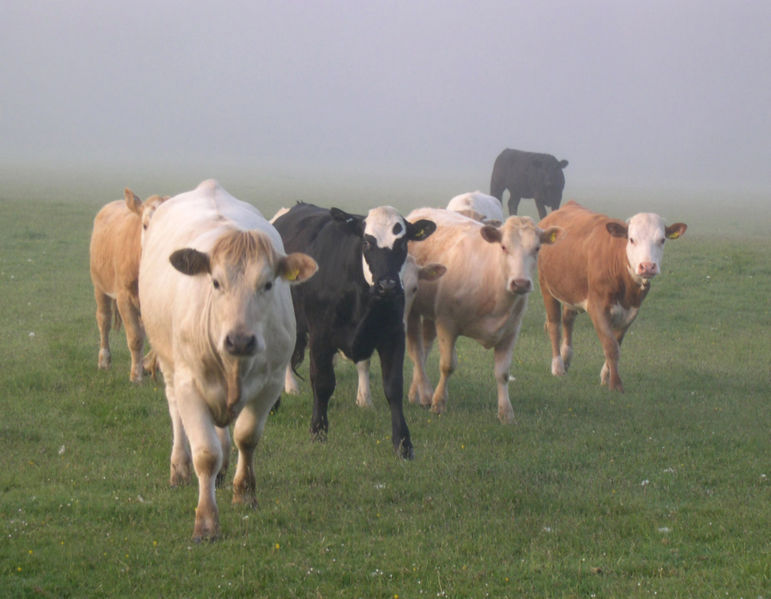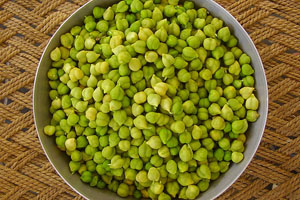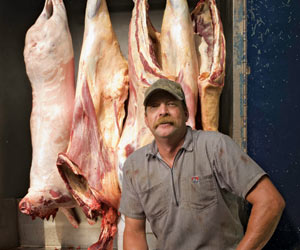
Photo by Pikaluk from UK, courtesy Wikimedia Commons
Global meat production has tripled in the past three decades and could double its present level by 2050. That’s likely to have a significant impact on human health, the environment, and the global economy in the next 50 year, according to a new two-volume report, Livestock in a Changing Landscape. Key findings regarding the economic and ecological footprint of livestock:
- More than 1.7 billion animals are used in livestock production worldwide and occupy more than one-fourth of the Earth’s land.
- Production of animal feed consumes about one-third of Earth’s total arable land.
- Livestock production accounts for approximately 40 percent of the global agricultural gross domestic product.
- Although 1 billion poor people derive part of their livelihood from domesticated animals, commercialized industrial livestock has displaced many small, rural producers in developing countries, like India and China.
- The livestock sector, including feed production and transport, is responsible for about 18 percent of all greenhouse gas emissions worldwide (the beef, pork and poultry industries emit large amounts of CO2, methane, and other greenhouse gases).
- The livestock sector is a major environmental polluter, with much of the world’s pastureland degraded by grazing or feed production, and with many forests clear-cut to make way for additional farmland.
- Feed production requires intensive use of water, fertilizer, pesticides, and fossil fuels.
- Animal waste is a serious concern, since only a third of the nutrients fed to animals are actually absorbed and the rest pollute lands and waters.
- Total phosphorous excretions of livestock are estimated to be seven to nine times greater than from humans.
Co-editor Henning Steinfeld of the United Nations Food and Agriculture Organization says:
“Without a change in current practices, the intensive increases in projected livestock production systems will double the current environmental burden and will contribute to large-scale ecosystem degradation unless appropriate measures are taken.”
Key findings regarding human health and the livestock industry include:
- Beef, poultry, pork and other meat products provide one-third of humanity’s protein intake.
- The impact of meat protein is highly variable around the world: too much animal-based protein is not good for human diets; too little is a problem for those on a protein-starved diet—a problem in many developing countries.
- Human health also is adversely affected by pathogens and harmful substances transmitted by livestock.
- Emerging diseases (like the highly pathogenic avian influenza) arise as a result of changes in livestock production, and are becoming more difficult to trace and combat in the newly globalized marketplace.
The report suggests that countries provide incentives for better management practices that focus on land conservation and on more efficient water and fertilizer use. Co-editor Fritz Schneider of the Swiss College of Agriculture tells the Stanford Report:
“So much of the problem comes down to the individual consumer. People aren’t going to stop eating meat, but I am always hopeful that as people learn more, they do change their behavior. If they are informed that they do have choices to help build a more sustainable and equitable world, they can make better choices.”











